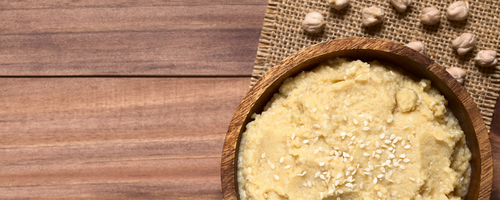It is very easy to incorporate chickpea nutrition into your daily regime. A single serving of chickpeas contains more than twice the minimum daily requirement of a protein rich meal. Chickpea proteins are extremely lean, with a high amino acid content. Cooking chickpeas can release the high levels of nutrients, especially dietary protein, that are in store inside. Here are the key chickpea nutrition facts to help you decide which style of cook you want to try first:
Chana Dippers is low in fat, very digestible, and high in fiber and protein. It is a close relative of the chickpea, so it technically does not contain chickpea but is instead a legume. Cooking a chana dipper is similar to cooking a bean curd, only a bit less messy. The nutrition facts list it as having four grams of fiber per serving, which is significantly lower than a bean curd, but well above the dietary requirements for a whole grain pasta. As a bonus, chickpeas themselves are extremely rich in B vitamins, calcium, iron, and vitamin E. For those with a low or moderate-calorie diet, can dippers are a fantastic addition, as they are extremely filling and satisfying without packing on the pounds.
You can easily toss chickpeas into any diet. The nutty, cheesy, spiced taste of chickpeas is a welcome departure from all of the bland, flavorless pasta and rice that we are so used to. Chana dal is a healthy, filling, and natural substitute for meat. If you don't like chickpeas as much as the vegans do, it doesn't matter; you can still eat plenty of the other great plant-based foods on this list without sacrificing taste and nutrition.
A favorite plant-based quick meal is hummus. There are many different types of hummus, and one of the best (and most versatile) is made using chickpea flour. It has the same texture and nutritional benefits as regular hummus but is made with chickpea flour. Even if you aren't looking for a vegan recipe, a glass of water will go a long way when adding it to your diet.
Chickpeas may not be on the menu at your health food store, but they should be on your grocery list. Chickpeas are packed with protein and heart health - they help lower LDL cholesterol, which is the "bad" cholesterol, as well as increasing HDL cholesterol, which is the "good" cholesterol. They have been proven to lower LDL cholesterol and raise HDL cholesterol, which is the type of cholesterol that can help fight heart disease. Eating chickpeas on a regular basis is one of the easiest and most delicious ways to improve your overall diet for better heart health.
Another great plant-based grain that adds chickpea nutrition to your diet is aquafaba. Aquafaba is similar to egg whites, and many people are now eating it for its health benefits. It's high in protein and iron, and it is also rich in nutrition, including vitamin B-12, folate, niacin, phosphorus, potassium, iron, and zinc. Many feel that adding aquafaba to their diet is better than simply buying commercial egg whites, because the powder isn't as big a meal as the white.
Lastly, there is the wonderful world of garbanzo beans. Although not as highly-appreciated as chickpea flour or aquafaba, garbanzo beans are an important part of a wide range of cuisines. These legumes have become popular worldwide, and the demand for healthier foods is constantly increasing. For example, instead of replacing eggs with eggs and bacon with mayonnaise and vegetable oil, many are opting for chickpea pasta or a nice bowl of warm, black bean soup to get their daily nutritional needs met.
